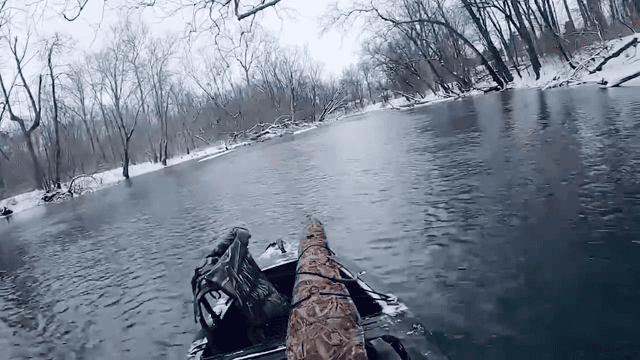
Hunting Seasons in British Columbia, Canada 2025–26: Big Game and Small Game, Licenses, and Regulations Guide Plan your 2025–26 British Columbia hunt with our province‑by‑province guide—season dates, bag limits, licenses, bow & rifle rules, and key game species from whitetail deer to waterfowl. British Columbia’s mosaic of coastal rainforests, interior plateaus and mountain ranges supports world‑class deer seasons, elk and moose hunts, black bear forays and waterfowl wingshooting. BC’s 225 Management Units (MUs) span nine regions, each with specific season windows, bag limits and provincial regulations. This guide compiles the 2025–26 deer seasons, elk and moose tag draws, small game and migratory bird dates, plus licence and weapon rules to ensure a compliant, ethical hunt in BC. What Is There to Hunt in British Columbia? Big Game: Whitetail deer, mule deer, elk, moose, black bear Small Game & Upland Birds: Ruffed grouse, blue grouse, snowshoe hare, wild turkey Waterfowl & Migratory Birds: Ducks, geese, swans, doves (federal permit required) Furbearers & Predators: Coyote, wolf, fox, beaver, marten BC’s diverse ecotypes deliver opportunities from spring bear hunts to late‑fall waterfowl wingshooting—year‑round adventure. What Animals Can You Hunt Year‑Round in British Columbia? Unprotected predators (coyote, fox, wolf) may be taken any time on private land with landowner permission; public land hunting outside open seasons often requires special permits. Always verify MU‑specific restrictions before targeting nuisance species. British Columbia Big Game Hunting Seasons 2025–26 Whitetail Deer & Mule Deer Archery: Sep 1 – Oct 15 Rifle/Muzzleloader: Oct 1 – Dec 7 Licences: Most MUs OTC; Limited Entry Draw for specified bull‑only areas Elk Archery: Sep 1 – Oct 31 Rifle/Muzzleloader: Oct 15 – Dec 7 Licences: OTC archery; LEH draw for antlered bull hunts in select MUs Moose Archery: Sep 15 – Oct 31 Rifle/Muzzleloader: Oct 15 – Nov 30 Licences: Limited Entry Draw only; applications open Feb – Mar 2025 Black Bear Spring: Apr 1 – Jun 15 Fall: Aug 1 – Oct 31 Licences: OTC; cub harvest prohibited; strict hound‑use restrictions in some areas Note: Draw application deadlines and MU‑specific tag allocations appear in the online Synopsis corrections & updates; check for in‑season changes. British Columbia Small Game & Waterfowl Seasons 2025–26 Upland Birds & Small Game: Ruffed Grouse, Blue Grouse: Sep 1 – Dec 31 (daily limit 5) Snowshoe Hare: Sep 1 – Mar 31 (daily limit 3) Wild Turkey: Apr 1 – May 15; Sep 1 – Dec 31 (daily limit 1; spring draw) Waterfowl & Migratory Birds: Ducks, Geese: Sep 1 – Dec 31 (daily limit 5 ducks; 5 geese) Mourning Dove: Sep 1 – Nov 30 (daily limit 15) Requirements: Federal Migratory Game Bird Hunting Permit & Canadian Wildlife Habitat Conservation Stamp Bag Limits by Species Deer (Whitetail/Mule): 1 antlered or antlerless per season Elk & Moose: 1 legal bull or cow (where drawn) Black Bear: 1 (cub harvest prohibited) Wild Turkey: 1 (per licence period) Grouse (all spp.): 5 daily; possession 10 Snowshoe Hare: 3 daily; possession 6 Ducks/Geese: 5 daily; possession 15 Mourning Dove: 15 daily; possession 45 Coyote/Wolf/Fox: no limit on private land; public‑land restrictions apply License & Tags Information for British Columbia Hunters (2025–26) Resident Licence: $30 (annual); individual tags $15/species Non‑Resident Licence: $200 (annual); tags $30/species; LEH draw fee $25 Additional Permits: Federal Migratory Bird Permit & Habitat Stamp (free; mandatory) LEH draw for antlered deer, elk and moose (applications Feb 1 – Mar 15, 2025) Hunter Education: Proof of BC Hunter Education Program or equivalent mandatory Hunting Methods: Bow, Rifle, Muzzleloader Bow: Compound, recurve, longbow; crossbows allowed only Dec 1 – Jan 31 in select MUs; broadhead minimum 7/8″ cutting diameter. Rifle: Centrefire calibres ≥ .24 cal; straight‑wall handgun calibres restricted; shotguns permitted for slug use only. Muzzleloader: Must be .40 cal or larger, patched round ball or conical bullet; approved ignition systems only; single‑projectile conversions only. Regulations & Resources Shooting Hours: ½ hour before sunrise to ½ hour after sunset MU Maps & Synopsis: Download the 2024–2026 Hunting & Trapping Regulations Synopsis effective July 1, 2024 – June 30, 2026 Corrections & Updates: In‑season updates listed online (last updated Jul 29, 2025) Harvest Reporting: Mandatory within 24 hours (online or phone) Special Areas: Parks and Protected Areas may require separate permits Verification Reminder: Before you head out, always verify season dates, bag limits, and licence requirements on the official BC Hunting & Trapping Regulations Synopsis to stay compliant and ensure a legal, ethical hunt. This guide was created based on information from Hunting & Trapping Regulations Synopsis: https://www2.gov.bc.ca/gov/content/sports-culture/recreation/fishing-hunting/hunting/regulations-synopsis Armed with exact season windows, bag limits and licence details, you’re set to plan your 2025–26 British Columbia hunt. Review official Synopsis updates, prepare accordingly and embrace BC’s unparalleled wildlife adventure.
Post: 30 July 07:12



















